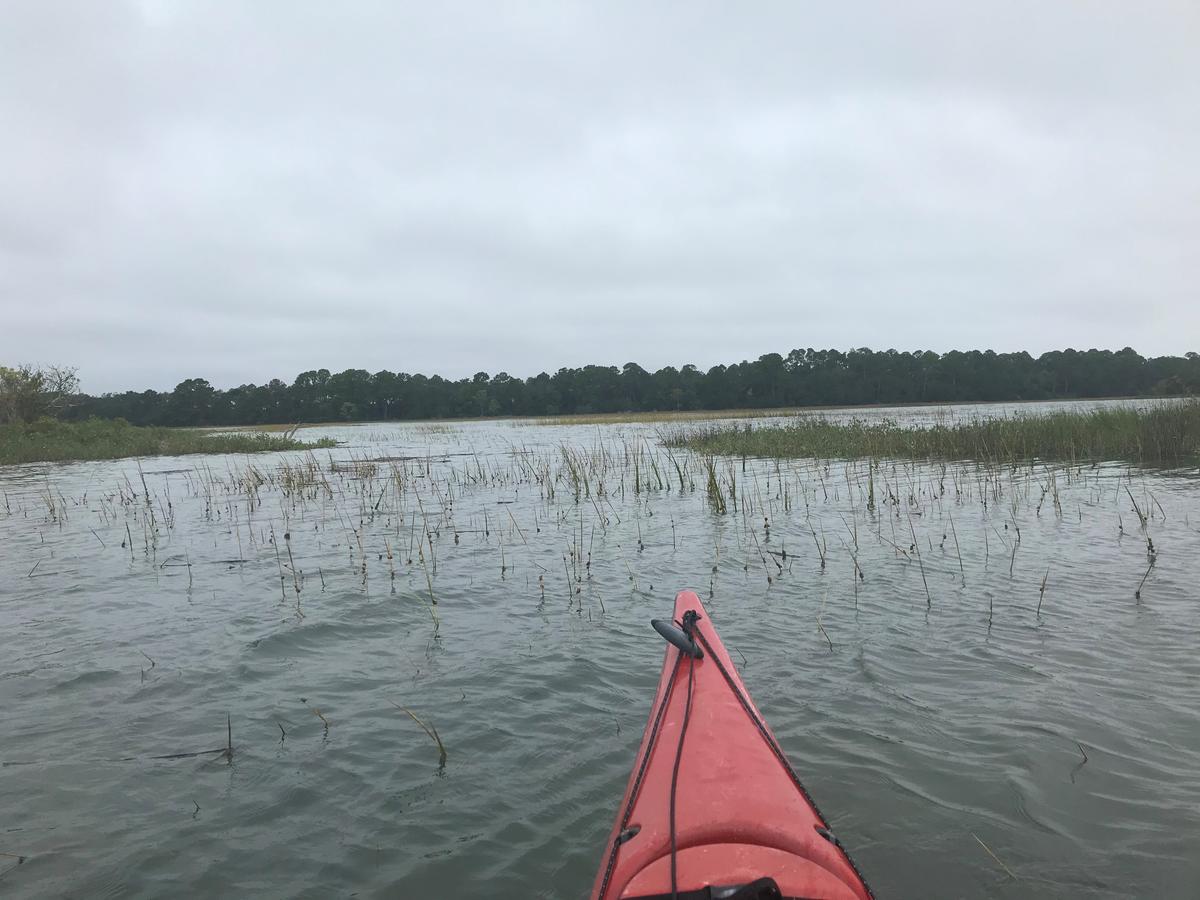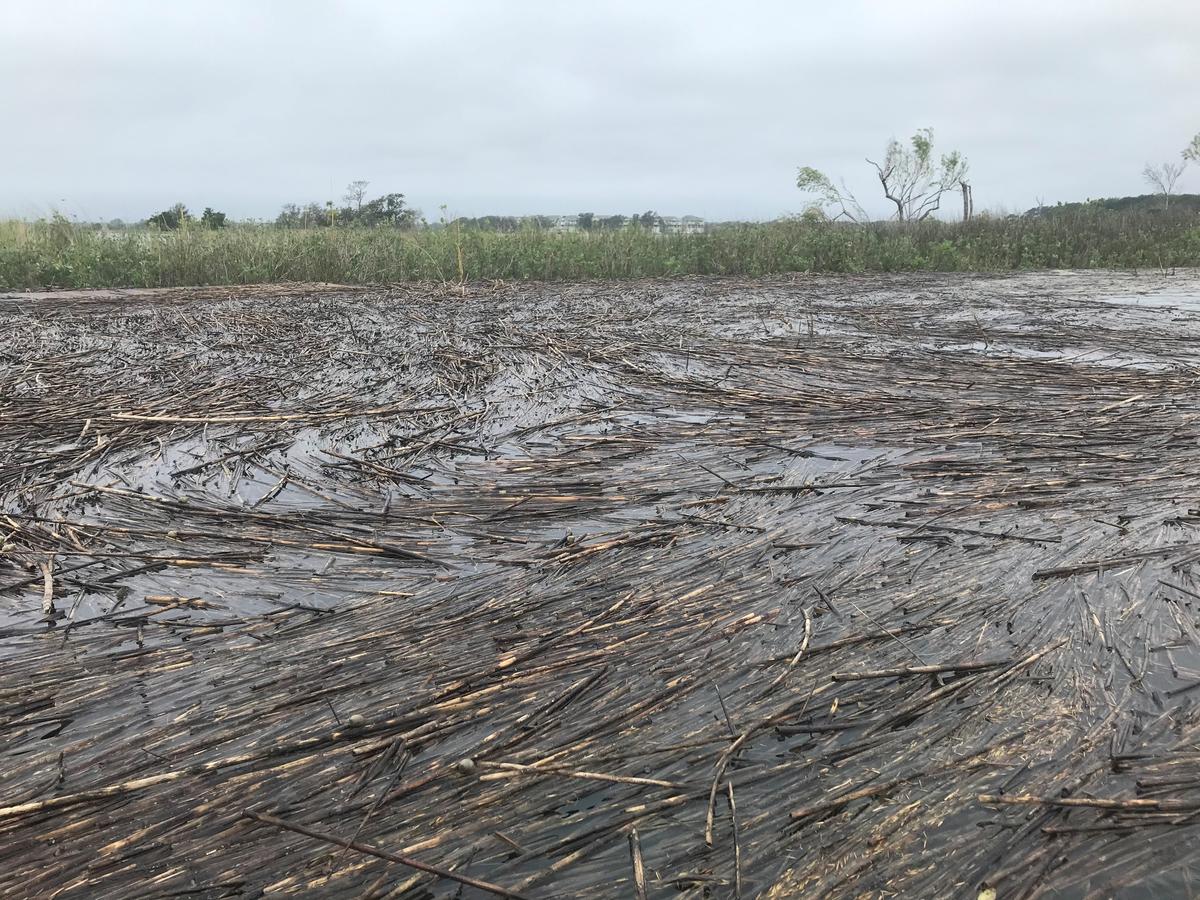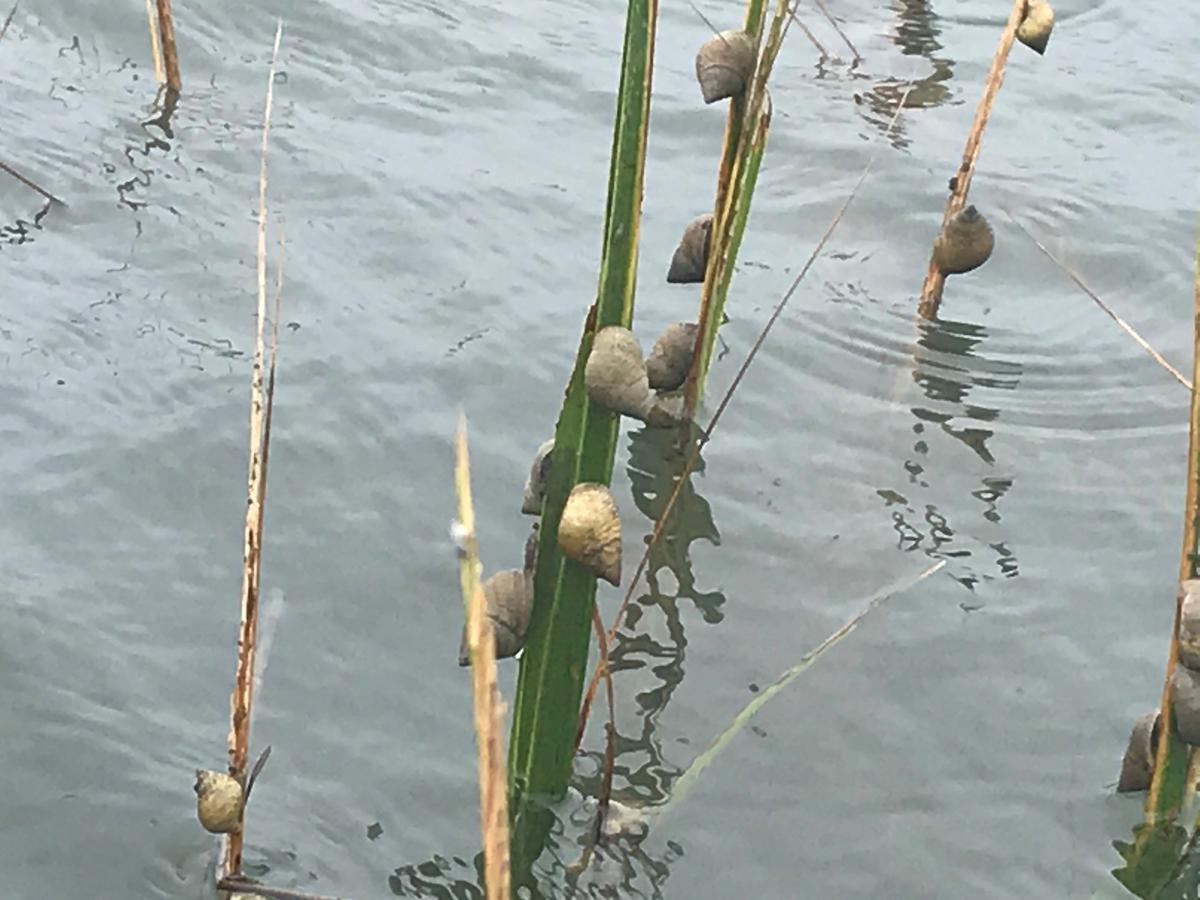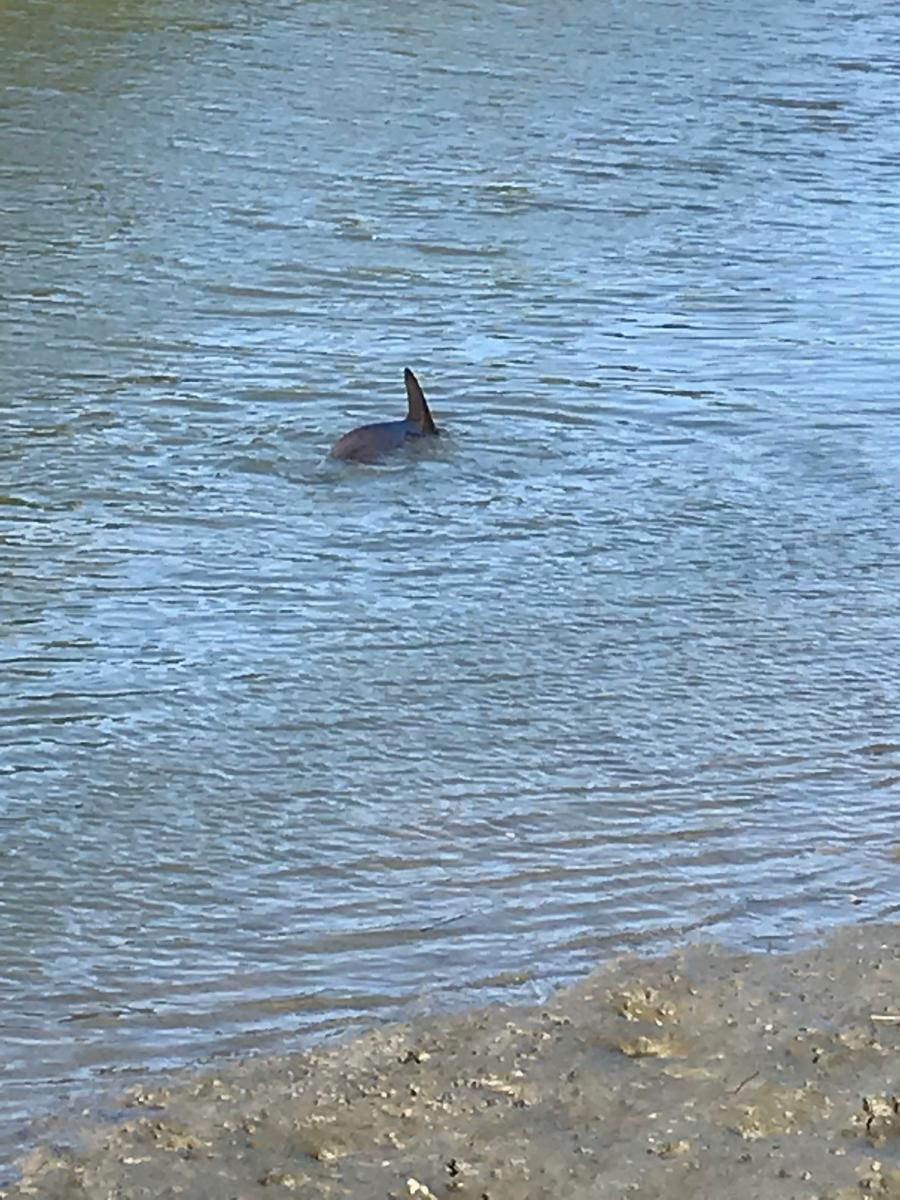
By Laura Murray, Ph.D.
A seven-foot king tide, a bottle-nose dolphin swimming by and a raccoon perusing the creek bank inspired me to explore the flooded salt marsh here in Charleston. On this cloudy day, wading birds, such as the American, snowy and tri-colored egrets found refuge from the high water and wind in trees on the slightly elevated areas surrounding the marsh.

Heading out
These high tides are beneficial to the marsh as they bring in water carrying nutrients to “feed” the plants and sediments allowing the marsh to keep up with sea level rise. The tide also disperses the previous year’s dead Spartina alterniflora, or salt marsh cordgrass (recently reclassified as Sporobolus), stalks that will decay and form the beginning of the salt marsh detrital food chain — the primary source of energy in these ecosystems. Thus, instead of the more traditional food chain of grass → grasshopper → Carolina wren, etc., the base of the salt marsh food chain is through the decomposition of dead plant matter by microorganisms (bacteria, fungi). These organisms are consumed by slightly larger ones, and so on up the food chain to the more familiar crabs, fish and birds.

Floating Detritus
Periwinkle snails, Littoraria irrorata, are one of the organisms that feeds on fungi and algae that grows on the Spartina shoots. The white shells of periwinkle snail can be seen on marsh sediments during low tide. At high tide, the snails climb up the stems of cordgrass to avoid predators such as the blue crab and fish that invade the marsh with the rise in water.

Snails on Spartina Stalk
The shallows of the marsh edge hold several interesting plant species, all of which are adapted to life in the salt water and can withstand the flooding. The glasswort, Salicornia, survives these adverse conditions by excluding the salt from their internal cells. Thus, the plant has a nickname of marsh potato chips due to its salty taste. Often, Salicornia co-exists with the delicate, violet colored flowers of sea lavender.

Glasswort and Sea Lavendar
After a couple hours of exploring the flooded marsh, I returned home with the dolphin playing in the waters ahead of me.

Dolphin Escort